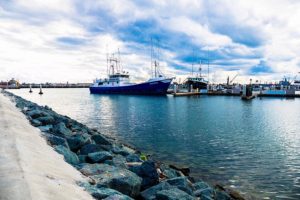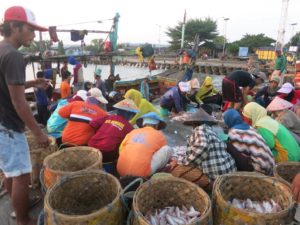Identifying Blue Economy Opportunities & Threats
At the core of our work, we believe taking a value chain approach to investing in development is the most responsible and most sustainable. Interlaying this approach with the development of the blue economy will ensure proper assessment of opportunities and threats.
Blue Economy
No single definition of “Blue Economy” exists; like the word “sustainability”, answers are scattered and subjective. To economic theorists, it refers to a type of circular economy where nothing is wasted, but to those involved with oceans or fisheries work, it refers to development and use of marine resources, although even this definition is subjective.
The marine-focused usage of blue economy has numerous definitions and is interchanged with “blue growth”. Many, like WWF, the Economist Intelligence Unit and the World Bank Group include sustainable economic, environmental, and social outcomes, i.e., triple-bottom line outcomes, while others refer to all economic activity generated by maritime industries.
In March of 2015, John Tobin, Global Head of Sustainability at Credit Suisse said,
“The “blue economy” is about conducting economic activity in a way that is consistent with the long-term capacity of marine ecosystems to sustain themselves.”
 Figure 1 Fishing vessels, California, USA
Figure 1 Fishing vessels, California, USA
Credit: By specchio.nero (San Diego harbor) [CC BY-SA 2.0 (https://creativecommons.org/licenses/by-sa/2.0)], via Wikimedia Commons
Value Chain Approach
While Wilderness Markets’ employs the USAID Value Chain Approach, a value chain approach is, at its core, market systems approach to development. These approaches acknowledge that industries do not operate in a vacuum – outside forces, like governments, resource and labor availability, and similar industries – create a dynamic system in which value chains exist. The value chain approach seeks to understand these so that the principal constraints to competitiveness, which can lie within the system or the environment, can be understood and mitigated. Failure to do so can result in unsustainable growth or detrimental impacts.
 Figure 2 Women harvesting seaweed, Zanzibar, Tanzania
Figure 2 Women harvesting seaweed, Zanzibar, Tanzania
Credit: Jada Tullos Anderson
Synergy of the Blue Economy and Value Chain Approach
One of the striking aspects of the multiple definitions of the blue economy is that the definitions imply a comprehensive approach to developing and using marine resources, aligning well with the value chain approach to development. Indeed, considering the main purpose of the value chain approach is to account for the dynamism of an industry or supply chain, then there can be no more perfect example of a dynamic business environment. The natural coastal and marine environment is always in flux and resource availability must be accounted for when considering the threats to a value chain. Similarly, global markets affect most marine-related activities and must similarly be considered when determining blue economy development pathways.
 Figure 3 Women sorting catch, East Java, Indonesia
Figure 3 Women sorting catch, East Java, Indonesia
Credit: Jada Tullos Anderson
Applications
Integration of the blue economy and the value chain approach is well-suited to fisheries, aquaculture, maritime services, tourism, and, particularly, to locational development that integrates multiple sectors, such as fisheries, tourism and port development as the unique and common needs of each can be considered as part of a whole solution. This can be useful for government authorities as they seek to cost-effectively develop and regulate coastal areas. Funders and financiers may also be receptive to this approach as it allows simultaneous de-risking through diversity and bundling of financing to decrease transaction costs.
 Figure 4 Honolulu and Waikiki Beach economy includes tourism, fishing and shipping, Hawaii, USA
Figure 4 Honolulu and Waikiki Beach economy includes tourism, fishing and shipping, Hawaii, USA
Credit: Jada Tullos Anderson
Final Thoughts
The value chain approach naturally fits blue economy development, offering improved value to developers and funders, while adding to the sustainability of the marine environment for people, business, and nature.



